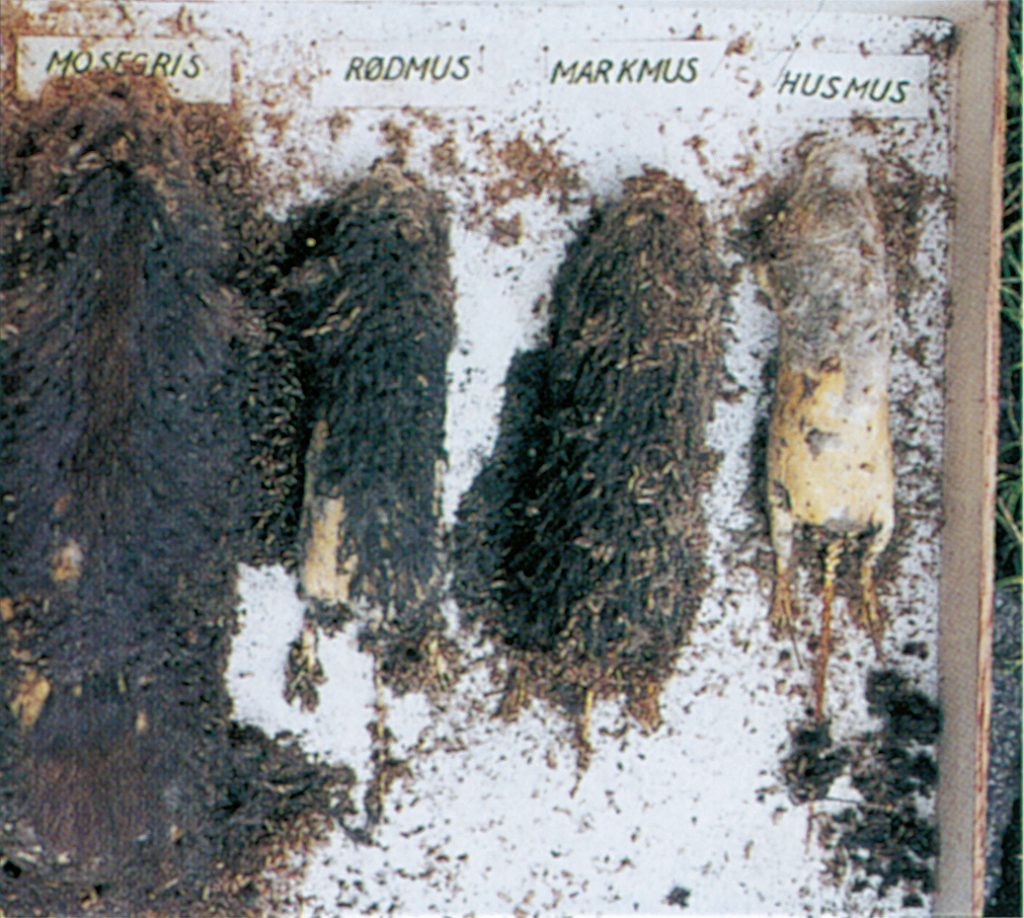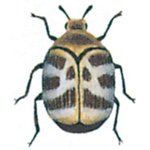(Latin: genus Anthrenus)
The museum beetles are somewhat like small ladybirds. However, they are not glossy, but have an attractive matt pattern formed by numerous small, black and reddish-yellow scales.
The larvae, which are yellow-brown and hairy, are known as ‘woolly bears’. At the rear end they have a tuft of long hairs, which can be erected when the larva is threatened. The adult beetles are seen especially in the spring. Like the preceding species they often sit on flowers where they feed on the pollen and nectar.

The eggs are laid in birds’ nests and in other animal homes or in dry carrion, where the larva can feed on feathers, hair and fragments of meat. They will also eat dead insects and are much feared by insect collectors. These are common insects and as the adults fly well they can be found almost everywhere.
The larvae sometimes wander about quite a bit and when they appear in large numbers in a house the source of infection may, for example, be a bird’s nest under the eaves, a felt carpet underlay, forgotten woollen cloths in a box of cleaning materials, or perhaps merely a collection of dead insects in a spider’s web.

In spite of their varied diet, museum beetles are usually very fastidious whenever they attack textiles, for they prefer clean new materials such as fine woollen curtains or bunting or soft, expensive knitted goods such as cashmere sweaters. In many places these insects are regarded as new pests of textiles, but this is probably because in former times they were grouped together with the numerous moth pests.
It is, in fact, quite likely that our ancestors knew them. For example, it has been suggested that Odysseus had museum beetle larvae in mind when on his return home he took up his old bow which was made of horn and turned it around to see whether the horn had not been eaten by worms (Homer’s Odyssey, song 21, verse 395).





